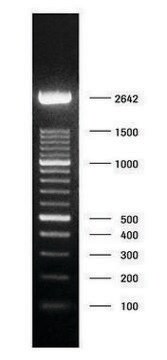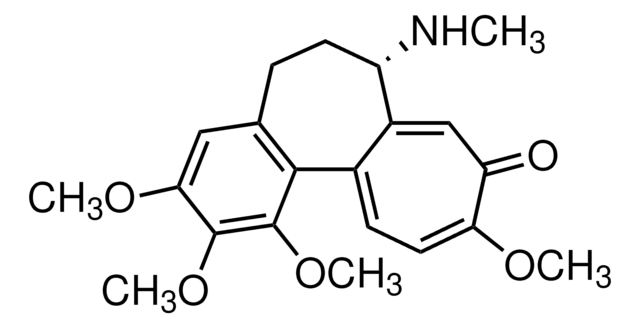추천 제품
생물학적 소스
human placenta (DNA)
Quality Level
Grade
Molecular Biology
양식
solution
포장
pkg of 500 μg
제조업체/상표
Roche
농도
1 mg/mL
불순물
HCV/HBV, none detected
HIV 1/2, none detected
색상
colorless
solubility
water: miscible
저장 온도
−20°C
유사한 제품을 찾으십니까? 방문 제품 비교 안내
관련 카테고리
일반 설명
Repetitive elements (IRS) present in a probe (e.g., cosmids, YACs, chromosome painting probes) generate nonspecific hybridization signals that are distributed over the whole chromosome or genome. To enable specific hybridization of the probe to the chromosomal target site (e.g., single-copy sequences or low-copy repeats) the probe must be denatured in the presence of excess unlabeled COT Human DNA. This DNA serves as a competitor. In a subsequent preannealing step, the repetitive probe elements rapidly hybridize to excess repeats in the COT Human DNA, while most of the specific probe sequences remain single-stranded and thus can be hybridized to their chromosomal targets. This technique is known as chromosomal in situ suppression (CISS) hybridization.
The COT fraction of human genomic DNA consists largely of rapidly annealing repetitive elements. These interspersed repetitive sequences (IRS) such as SINEs (small interspersed repetitive elements, e.g., Alu-elements) and LINEs (large interspersed repetitive elements, e.g., L1-elements) are distributed ubiquitously throughout the genome. COT Human DNA is prepared from human placental DNA by shearing, denaturing, and reannealing under conditions that enrich these repetitive elements.
애플리케이션
COT Human DNA is used in chromosome in situ suppression (CISS) hybridization. Cosmid or YAC probes contain repetitive elements that result in monospecific hybridization signals distributed over the entire chromosome. To enable specific hybridization to the chromosomal target site, the probe is denatured together with an excess of unlabeled COT Human DNA as a competitor. COT Human DNA can be used to suppress nonspecific hybridization to human repetitive sequences in microarray analysis, and in filter and in fluorescent in situ hybridization experiments.
서열
In agarose gel electrophoresis the length distribution of the COT Human DNA fragments shows a maximum in the range of 50 to 300 nucleotides.
물리적 형태
Solution, 1 mg/ml, 10 mM Tris-HCl, 1 mM EDTA, pH 7.4
기타 정보
For life science research only. Not for use in diagnostic procedures.
Storage Class Code
12 - Non Combustible Liquids
WGK
nwg
Flash Point (°F)
No data available
Flash Point (°C)
No data available
이미 열람한 고객
Early S-phase cell hypersensitivity to heat stress
Nadezhda V
Cell Cycle (2016)
HiCTMap: Detection and Analysis of Chromosome Territory Structure and Position
by High-throughput Imaging
by High-throughput Imaging
Ziad Jowhar
Nature (2017)
자사의 과학자팀은 생명 과학, 재료 과학, 화학 합성, 크로마토그래피, 분석 및 기타 많은 영역을 포함한 모든 과학 분야에 경험이 있습니다..
고객지원팀으로 연락바랍니다.








